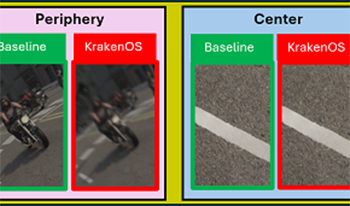
Automotive Simulation is a potentially cost-effective strategy to identify and test corner case scenarios in automotive perception. Recent work has shown a significant shift in creating realistic synthetic data for road traffic scenarios using a video graphics engine. However, a gap exists in modeling realistic optical aberrations associated with cameras in automotive simulation. This paper builds on the concept from existing literature to model optical degradations in simulated environments using the Python-based ray-tracing library KrakenOS. As a novel pipeline, we degrade automotive fisheye simulation using an optical doublet with +/-2◦ Field of View(FOV), introducing realistic optical artifacts into two simulation images from SynWoodscape and Parallel Domain Woodscape. We evaluate KrakenOS by calculating the Root Mean Square Error (RMSE), which averaged around 0.023 across the RGB light spectrum compared to Ansys Zemax OpticStudio, an industrial benchmark for optical design and simulation. Lastly, we measure the image sharpness of the degraded simulation using the ISO12233:2023 Slanted Edge Method and show how both qualitative and measured results indicate the extent of the spatial variation in image sharpness from the periphery to the center of the degradations.
Daniel Jakab, Julian Barthel, Alexander Braun, Reenu Mohandas, Brian Michael Deegan, Mahendar Kumbham, Dara Molloy, Fiachra Collins, Anthony Scanlan, Ciarán Eising, "SOLAS: Superpositioning an Optical Lens in Automotive Simulation" in Electronic Imaging, 2025, pp 101-1 - 101-6, https://doi.org/10.2352/EI.2025.37.15.AVM-101
 Find this author on Google Scholar
Find this author on Google Scholar Find this author on PubMed
Find this author on PubMed